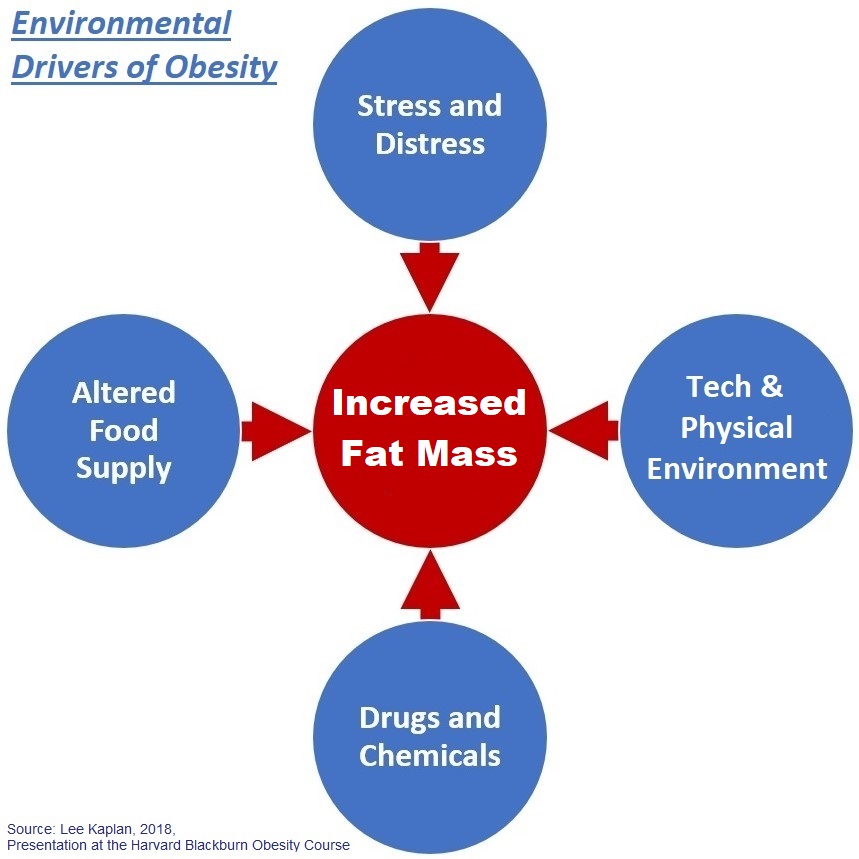
Adiposity Through Chemistry – Time to Pay Attention
Better living through chemistry is a catchphrase that takes us back to a time before obesity was really taking off in America. DuPont dropped that phrase in 1982. But the chemistry that may help bring us more adiposity is starting to get some serious attention. Writing in Obesity Reviews, Kelly Brownell and Tim Lobstein are telling us that the endocrine disrupting chemicals may rival diet as a cause of obesity:
“Emerging evidence indicates that industrially produced endocrine-disrupting chemicals (EDCs) may be as obesogenic as poor dietary patterns and should be considered in obesity prevention policies.”
This marks a serious shift. For some time now, these advocates have focused mostly on making “big food” pay for making us fat. When Lobstein wrote last year about policies to prevent obesity, it was all about the food industry. Tax it, label it, regulate the advertising. Food was the problem getting all the focus.
More Than Just Food
 Unfortunately, the origins of our problem do not have a singular cause. Yes, the food supply has changed and it plays a role. But the problem with the food supply is more than sugar. In fact, as we’ve written before, it’s more than just the composition of the food. Many intangible factors in the food supply – including all aspects of marketing – have led us to have food everywhere for non-stop consumption. It becomes a grazing ritual.
Unfortunately, the origins of our problem do not have a singular cause. Yes, the food supply has changed and it plays a role. But the problem with the food supply is more than sugar. In fact, as we’ve written before, it’s more than just the composition of the food. Many intangible factors in the food supply – including all aspects of marketing – have led us to have food everywhere for non-stop consumption. It becomes a grazing ritual.
But other factors contribute, possibly just as much. Stress and distress clearly contribute. So does our physical environment, organized around inactive transportation, work, and leisure. We sit and ride more. Brief bursts of gym activity do not fully compensate for this.
Endocrine Disrupting Chemicals
Finally, and not least, are the drugs and chemicals that we passively consume. Toxicology screening evolved in large part from a concern about cancer and acute poisoning. Endocrine disrupting chemicals might not have an immediate toxic effect. They might not cause cancer. If they harm animals and humans only by causing weight gain, this can and did escape notice for some time.
But now, people are taking notice. Do we really need PFAS in our pizza boxes and food wrappers? Or makeup? Do we need an endocrine disruptor like chlorpyrifos in the food chain? More and more, regulators, businesses, and the public realize that the answer is no.
So we are delighted to hear from Lobstein and Brownell that people should pay attention to the risk of adiposity through chemistry. They are right.
Click here for their review and here for more from the World Obesity Federation. For perspective from the Endocrine Society, click here.
Chemicals for Crops, photograph © Bob White / flickr
Subscribe by email to follow the accumulating evidence and observations that shape our view of health, obesity, and policy.
September 2, 2021
